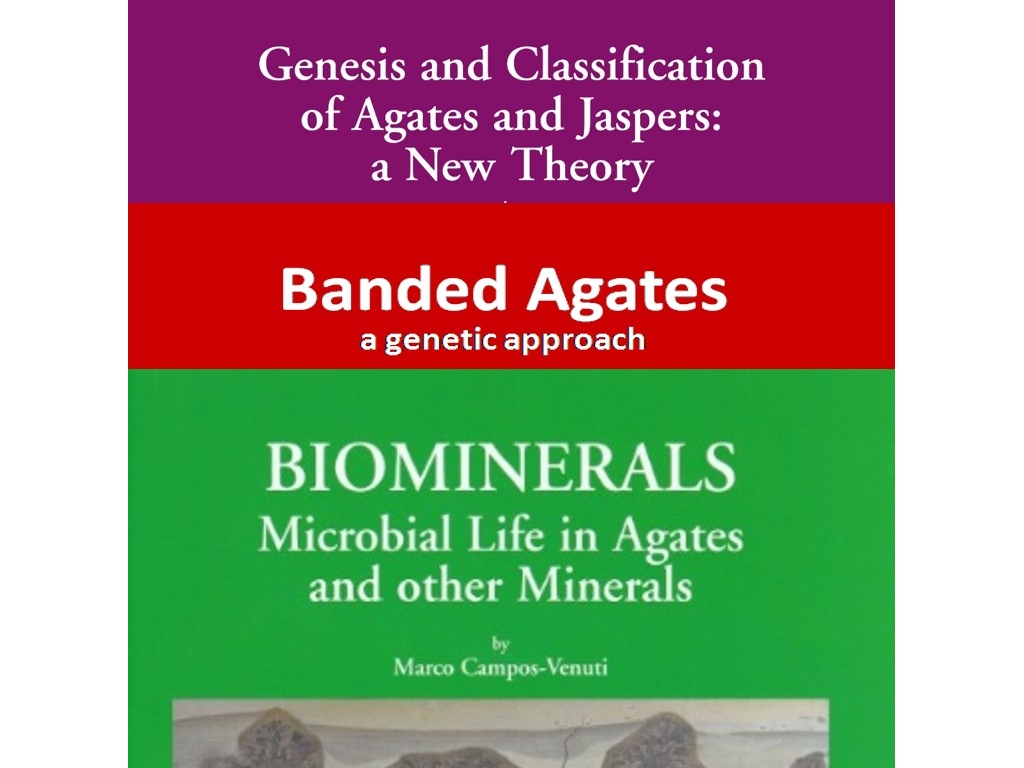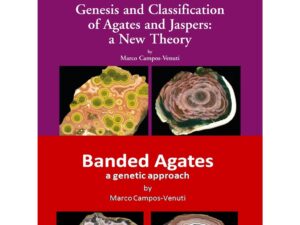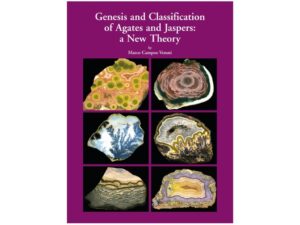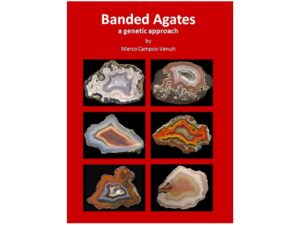Genesis and Classification of Agates and Jaspers: a New Theory
Synopsis
Jasper and Chalcedony are two silica polymers. They are formed as concretions in surface rocks. This leads that silica varieties take their origin in a meteoric environment with a strong influence due to the weather and the alternation of dry and wet seasons. Uncountable situations are possible due to the many parameters as the host rock, the pH of the water and the latitudes, that explain the numerous existing varieties of silica. Explication of the involved phenomena is ruled out with the help of an endless number of pictures and diagrams that capture and maintain the attention of the reader.
Banded Agates: a genetic approach
Synopsis
A model for the genesis of banded agates is proposed explaining the basic concentric banding and all the variation as horizontal and convolute banding. Chemical processes at the base of Chalcedony deposition are described with simple words and associated to the structures commonly found in natural collectable stones. The book includes many different diagrams showing the formation of the most important structures found in banded agates, as connective channels and stalactites. The interaction with microbial fauna has been proposed for explain a wide group of agate and many characteristic structures.
Biominerals: Microbial Life in Agates and other Minerals
Synopsis
In this book we analyze those minerals that precipitate thanks to the interaction with bacterial colonies. These are extremophile bacteria characteristic of the deep biosphere that live in environments normally characterized by the abiotic precipitation of crystals. The result is real microbialites composed of minerals normally present in mineral collections, but with geometries that are difficult to explain by following the rules of classical mineralogy. Moss agates, manganese Dendrites, Moqui Stones, Pyrite Suns, Feather malachite, Turquoise, are just few examples of biominerals.



